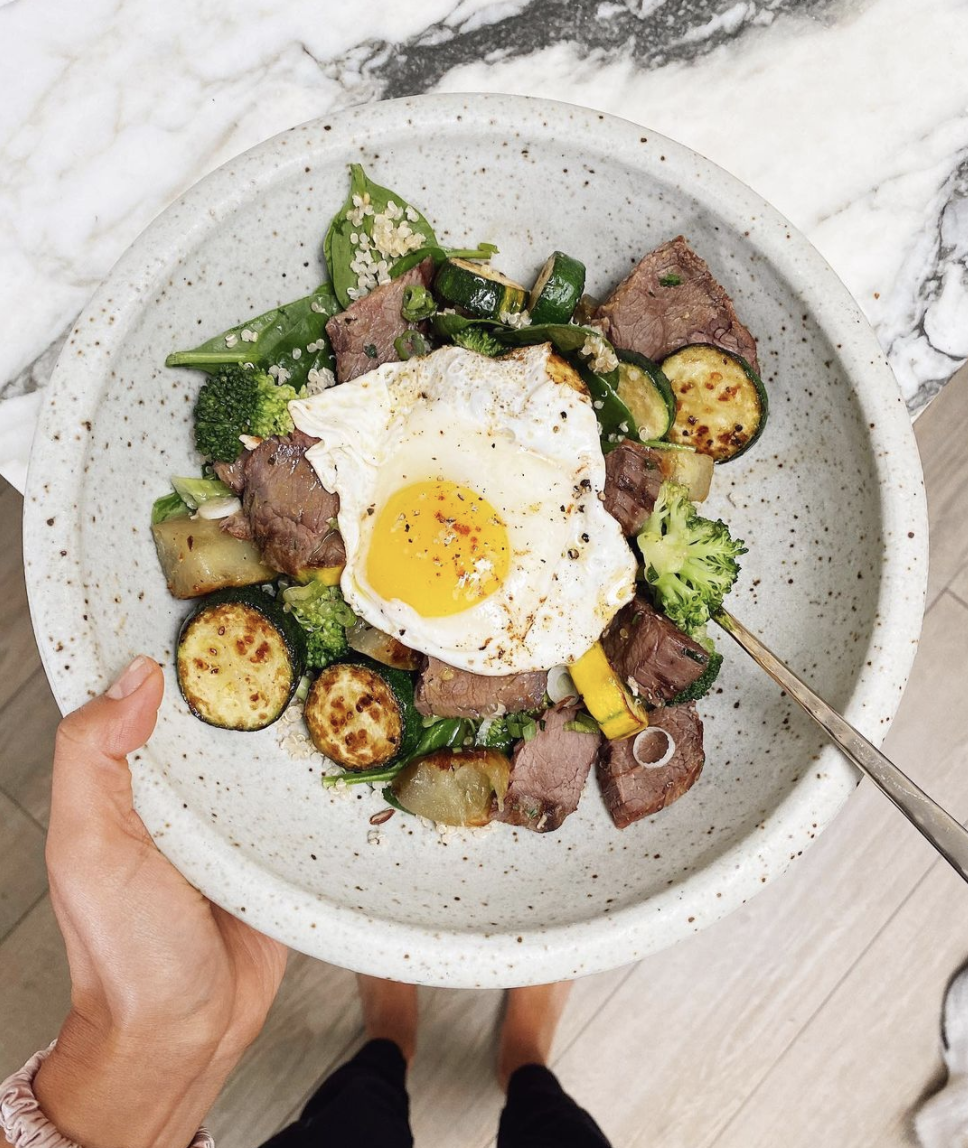Build The Perfect Macro Bowl
Nate and I love to teach about nourishment, not dieting.
Getting you to understand the foundational principles is far more important to me than showcasing any one diet or meal plan. You can't learn from one example. You can, however, take an honest assessment of yourself in the past months and years and see trends, learn from how things shift over time, and through all of it, find the common fundamentals that never change. Like with everything we have learned, this has been our method to fine tuning nutrition.
The biggest obstacle that we have come to understand that people face the most in the nutrition department is:
EMOTION.
Our emotions - the physical sensations we feel when we interact with the external environment, all of which are driven by our nervous system and hormones - are intimately connected to our digestive organs and the centers of our body that drive hunger, cravings, and motivation to change physically. The outside world is set up to attack all of these centers. Most of us don't find ourselves in the optimal environments to thrive unless we have made a concerted effort to create a space for proper nourishment in our lives and our homes. It is a daily battle for most to ward off the cues that tell us to reach for the less-than-optimal food choice that is never more than a click, call, or arms reach away. It's never been easier than it is now to have some junk food brought straight to your front door and not even have to move from the couch.
The more thoughtful and intentional you are with building meals of quality food each day, the less likely you are to be pulled off track. It's that simple. Below are the elements Nate thinks about when building his famous macro bowls - feel free to use them as a jumping off point to meals you create!
1. Think About Quality
Take a look down at your plate. Can you list the ingredients in your meal? Or is it filled with a laundry list of ingredients you don’t know? Did you have to refer to the list of ingredients on the box it came from?
Making steamed sweet taters, chicken breast cooked with olive oil and salt, and a side of berries and broccoli has only 4 ingredients.
VS.
Eating the bagged or boxed veggies, the boxed pork carnitas, and the boxed salad with packaged dressing and toppings - all from Trader Joe's - will easily have over 20 potentially processed ingredients total.
2. Establish Protein Source
Every plate of food he has, with few exceptions, is built around a main protein source. For him that is typically animal protein, but could be a plant-based source for you.
You can aim for anywhere from .65-1 gram/pound of bodyweight each day depending on your goals, level of leanness, and the type of training you do.
3. Include Vegetables
Nate ALWAYS puts at least 1 vegetable on his plate. It is usually cooked, but sometimes raw. Cooked veggies digest better, and the process of steaming and roasting vegetables allows him to bake in some flavor.
“But, Nate, I don't like the way they taste.” That's likely due to the fact that your palette has been spoiled by artificial flavors found in processed food. Your taste buds will adjust accordingly.
4. Determine Your Carbohydrate Needs
We all don't need to be eating so much carbs (rice, potatoes, bread, oats, pasta, fruit, etc) at every meal. Add some to your plate as needed.
Break the norm and recognize this is not a ‘necessary’ food if you are aiming to lose weight and or lean up. Carbs are only necessary based on your energy expenditure and everyone is different. Honest self-assessment time.
Nate’s favorite sources are oats, sweet potatoes, fruit, rice. He avoid gluten as it doesn't digest well for him.
5. Determine Your Fat Needs
Fat is the macro that can help fill in your caloric needs where protein and carbs fall short on the day. It is satiating and will keep you feeling full longer and is essential for tissue repair and hormone health.
His favorite sources are grass fed butter, olive oil, avocados and avocado & coconut oils, walnuts, eggs, and cottage cheese.
6. Make Your Food Taste GOOD!
Real food that is minimally processed can taste amazing. Get more flavor mileage out of your food with a couple of my top secret pro tips that I don't often share.
Don't be a cheapskate with the quality of salt you use. Good salt tastes way better - we use Maldon Salt, & I'll never go back.
Soak vegetables like broccoli, brussels, asparagus in ACV (Apple Cider Vinegar) before steaming to lock in some flavor. After steaming, a great way to finish them is little bit of Braggs Liquid Aminos.
Cook mung beans, quinoa, lentils, rice etc...in a half bone broth / half water mix. It will make your grains pop with flavor.
Citrus and vinegar add a dimension to food that is really nice. Most chefs know the secret to making a dish pop is adding some acid to your dish. & the best chefs understand that LESS is MORE in terms of seasoning their foods. Most of my salads have splashes of ACV and some lemon for that reason. I let the beautiful rainbow mixture of seasonal produce do their thing and complement one another.
There you have it - bowl perfection! If you want to learn some of our go-to recipes and get our weekly grocery list, enter your email below and we’ll send it right over!







